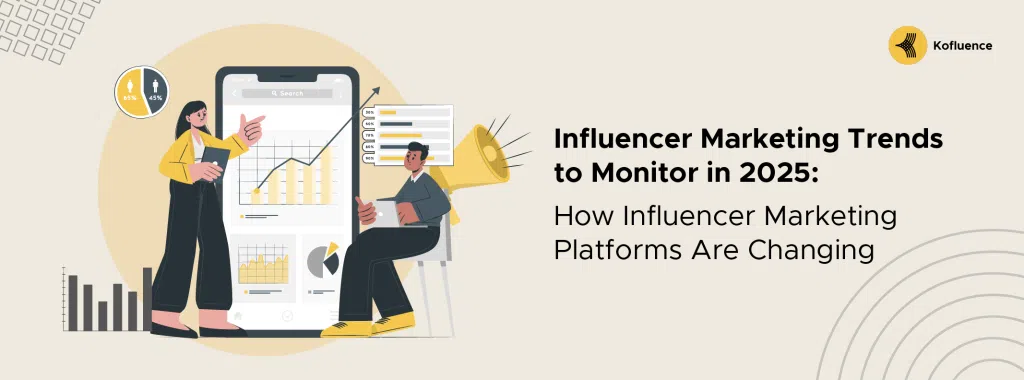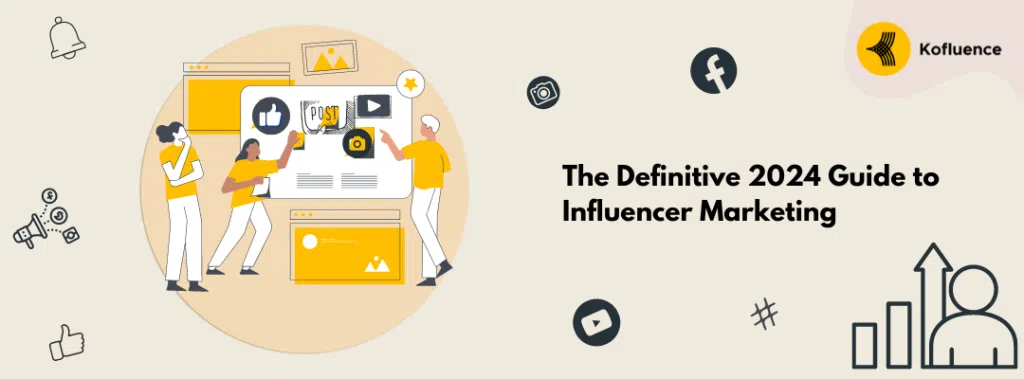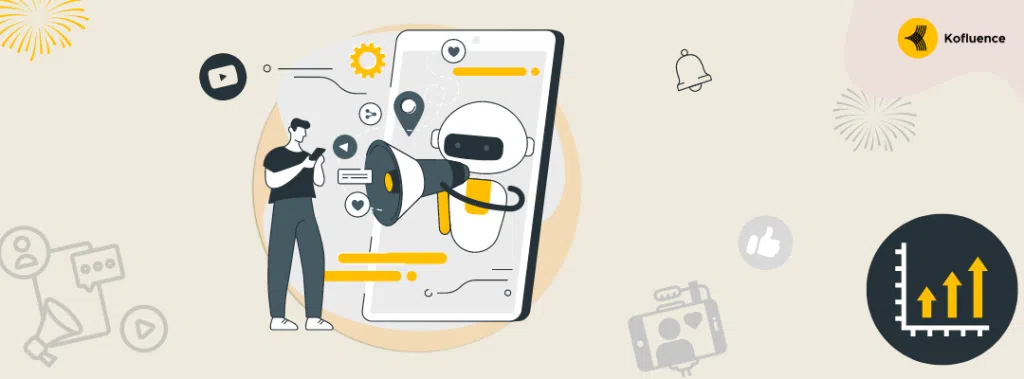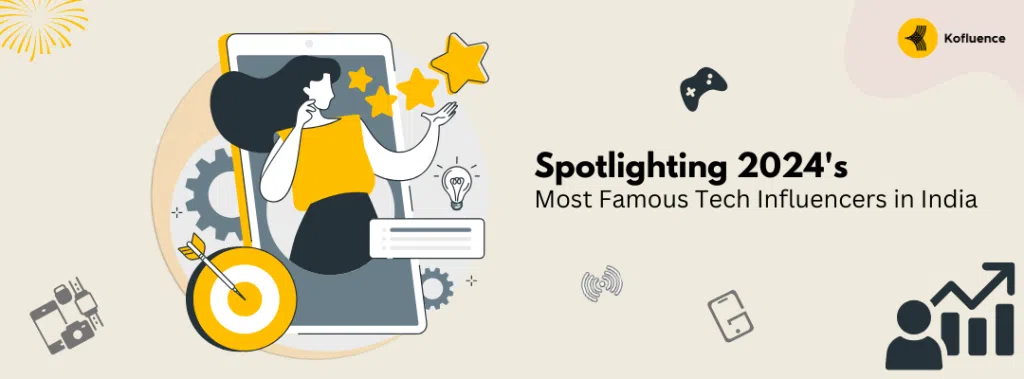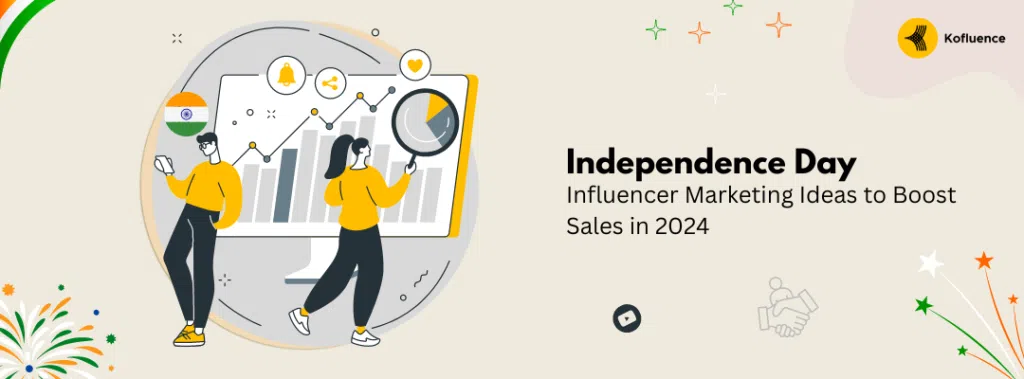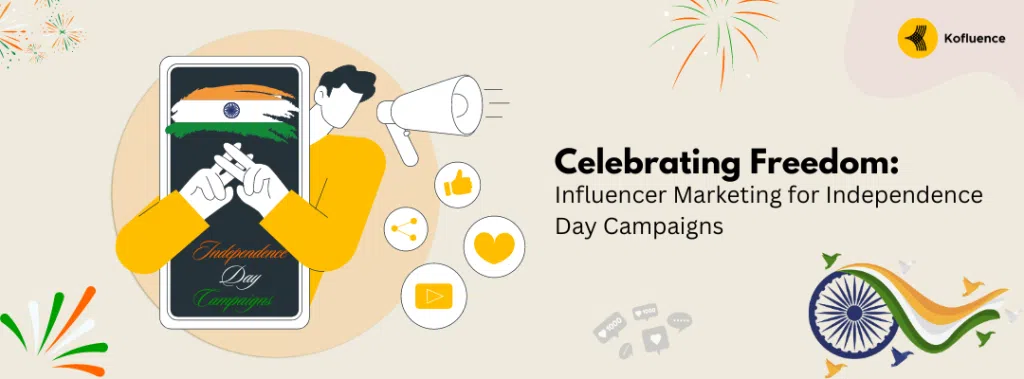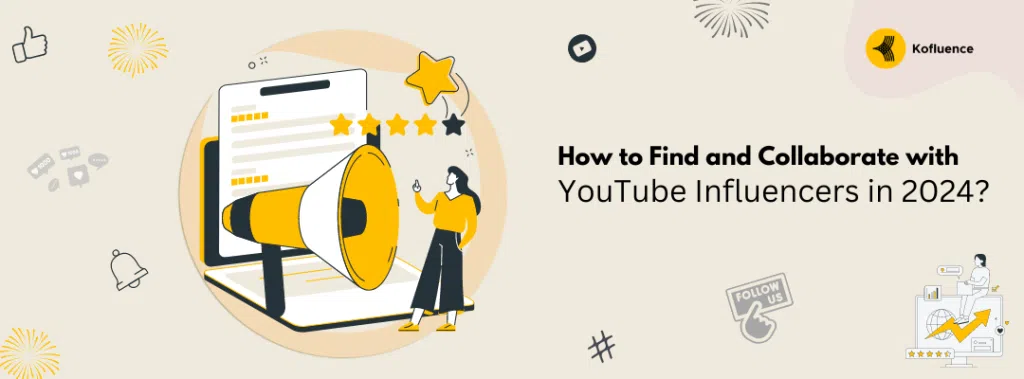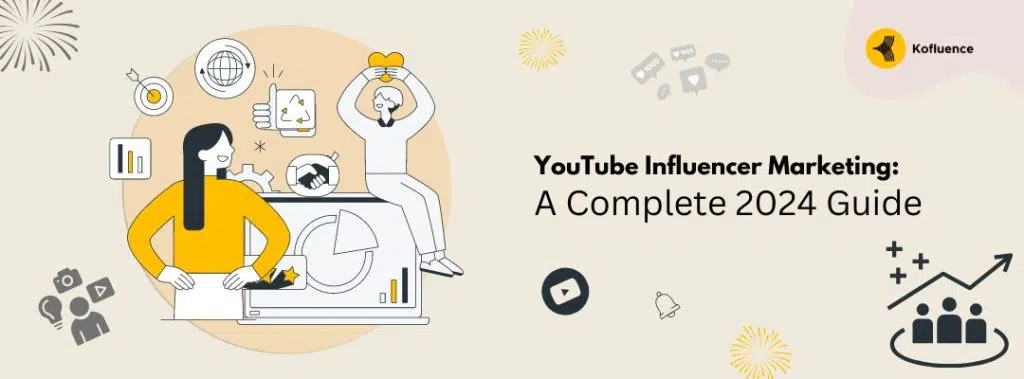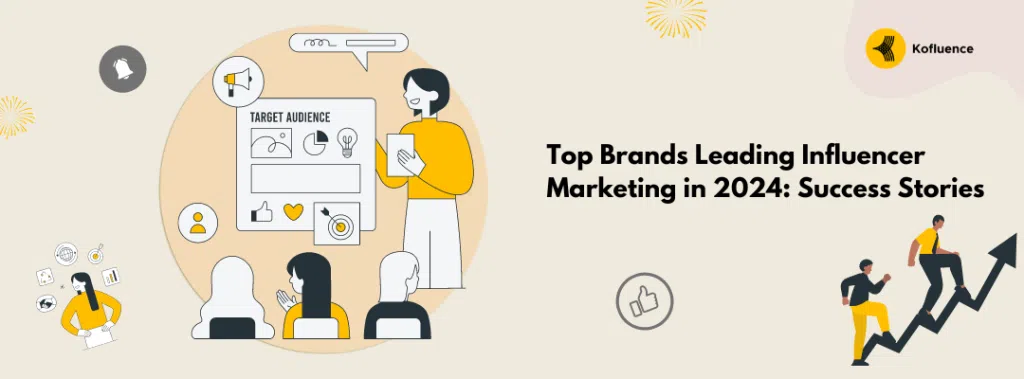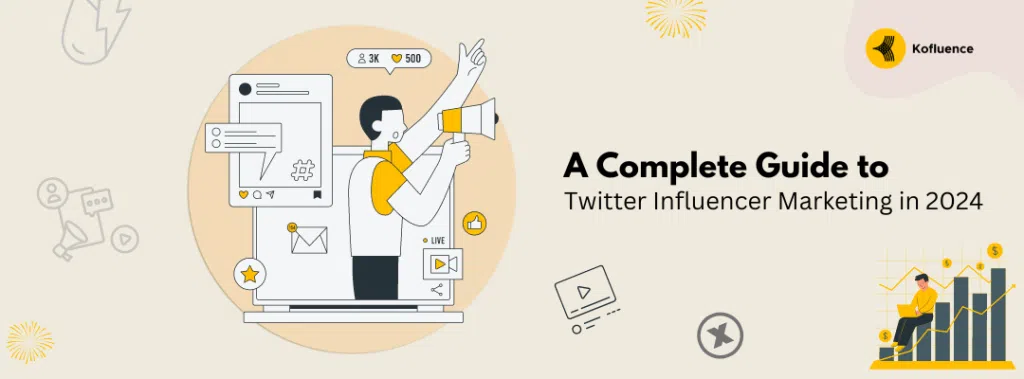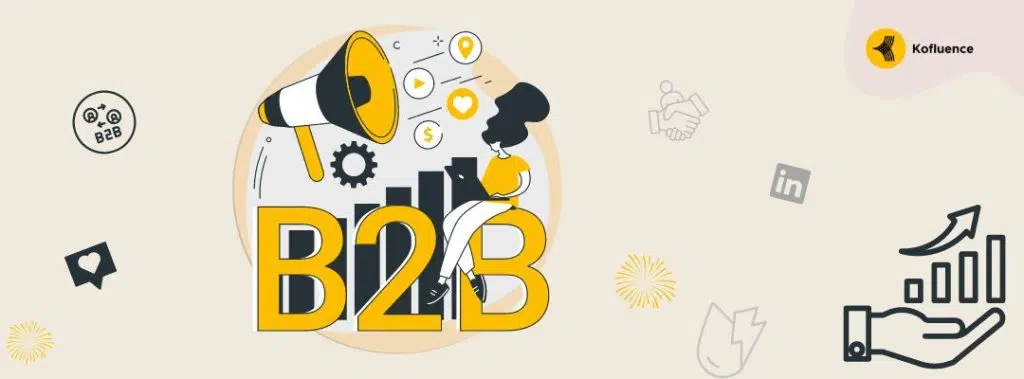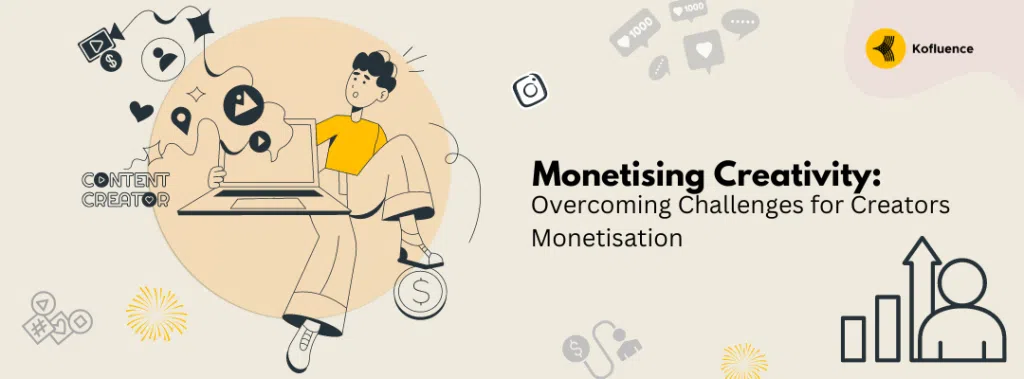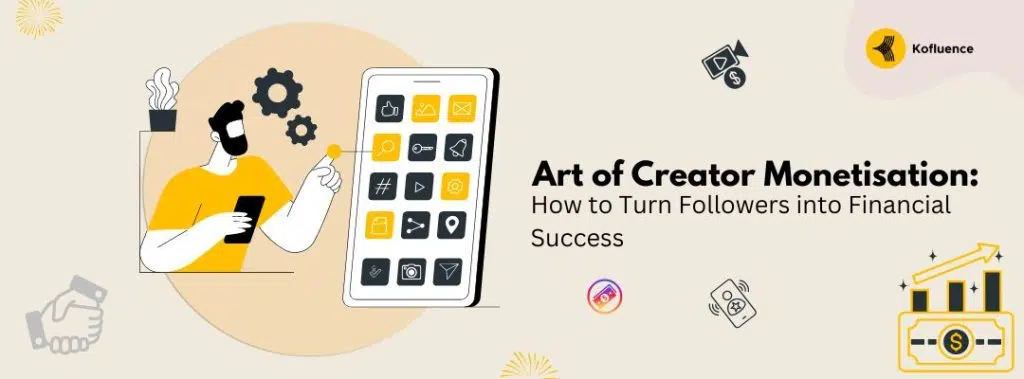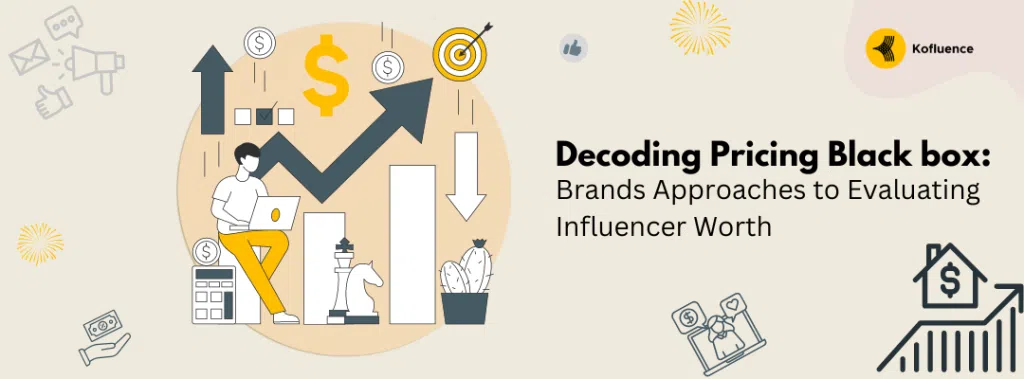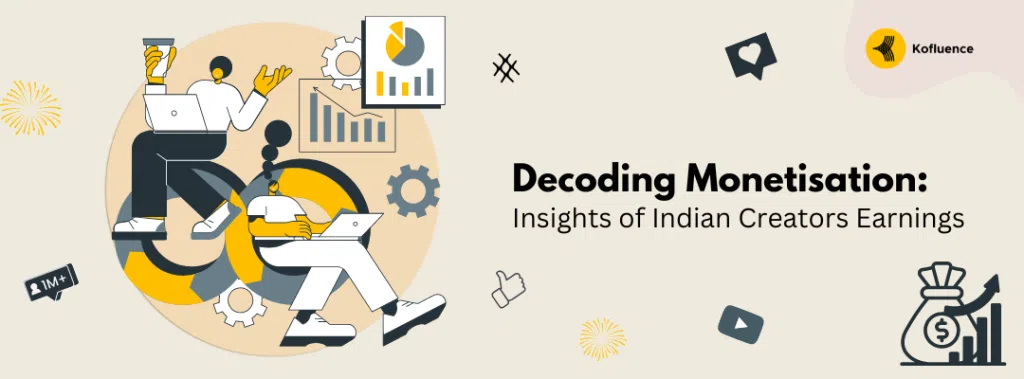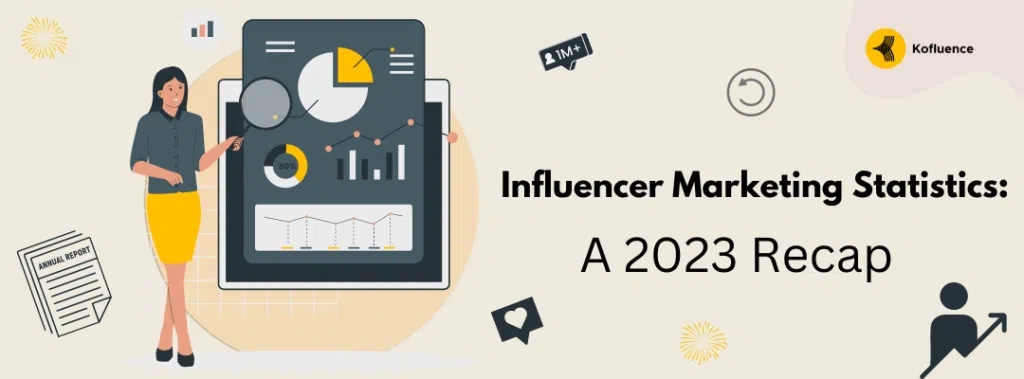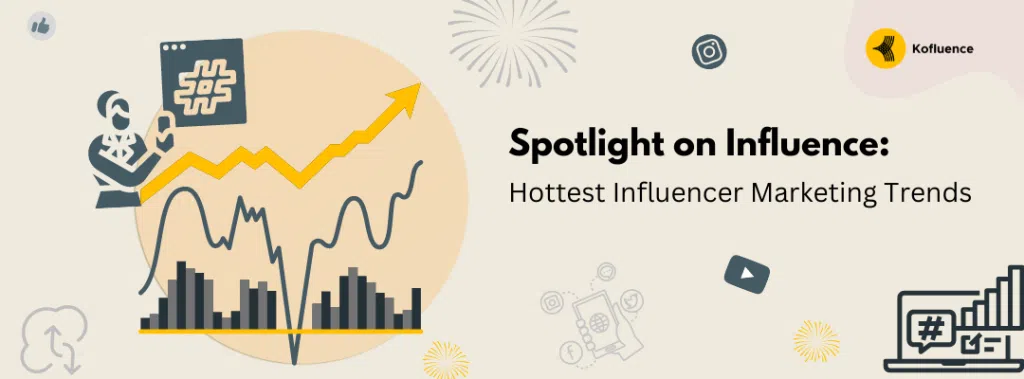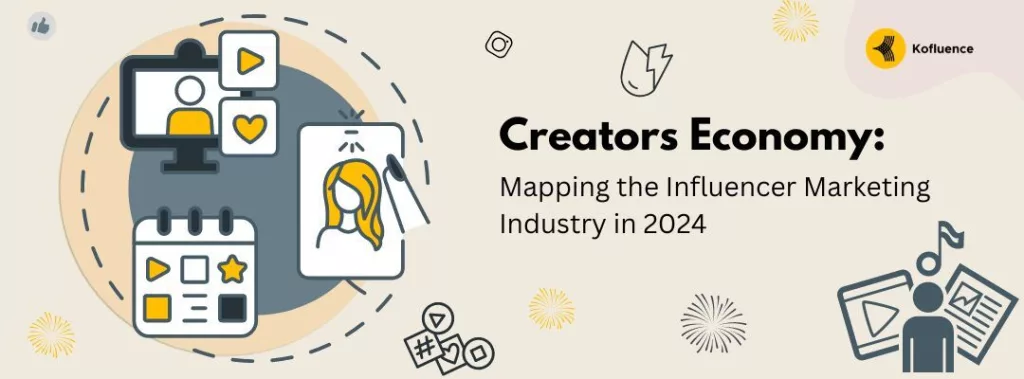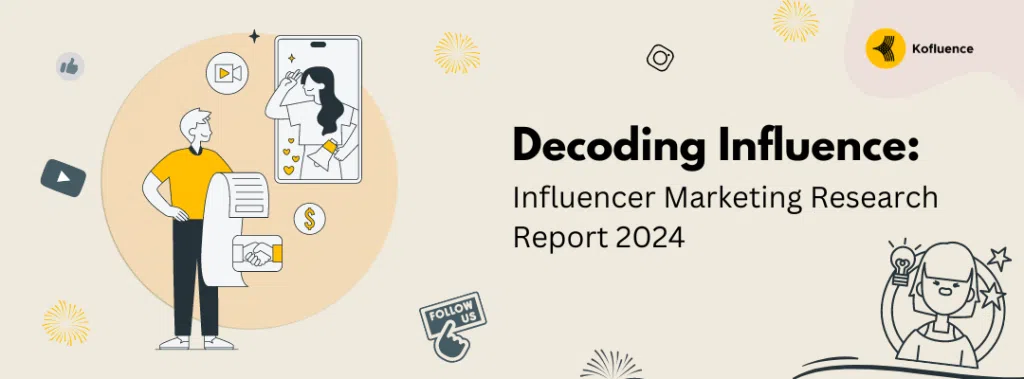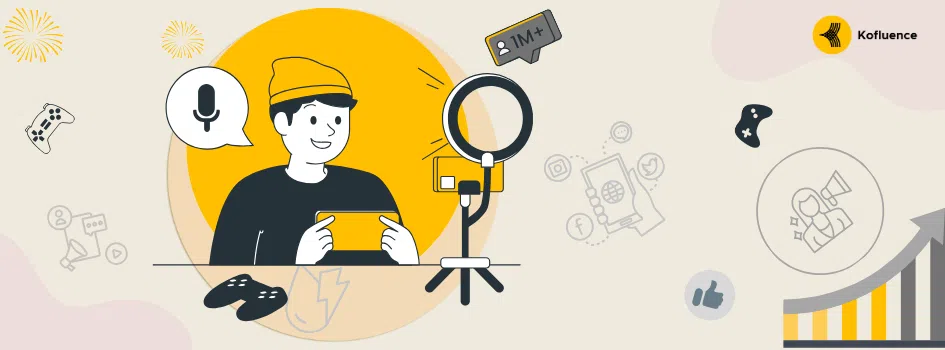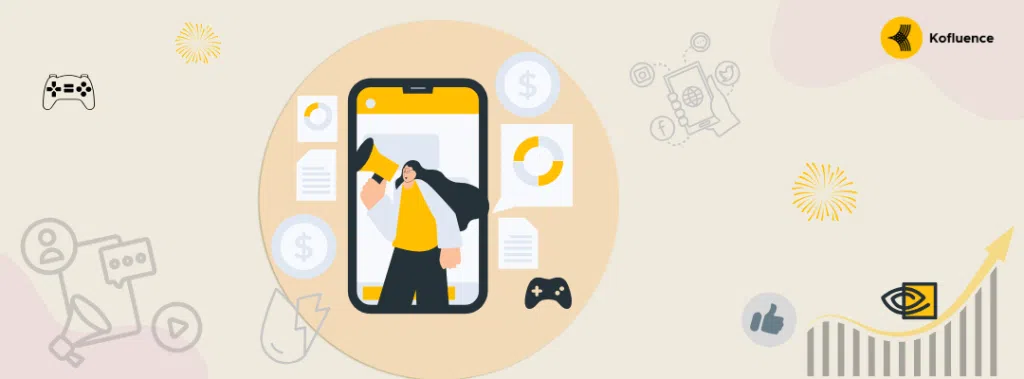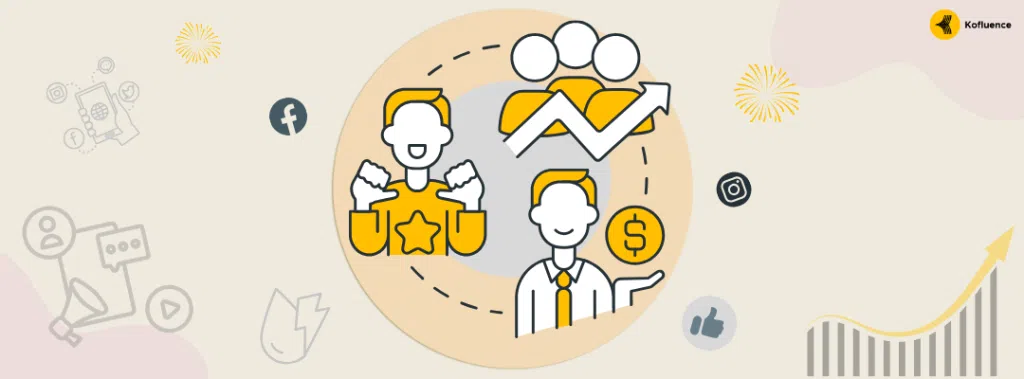Listen to Audio Blog
Table of contents:
What are the different stages of the influencer marketing funnel?
Building Blocks of Influencer Marketing Funnel
Generating Interest and Consideration
Encouraging Action and Conversion
Challenges To The Funnel And How Kofluence Sets The Path
Introduction
Welcome to our comprehensive guide on creating a successful influencer marketing funnel, complete with essential metrics and KPIs for measuring campaign effectiveness. An influencer marketing funnel is a strategic process that involves guiding potential customers through a series of steps toward making a purchase. In simpler terms, it’s a journey that starts with building awareness and culminates in conversion.
So, why should businesses prioritize this approach? Well, influencer marketing has emerged as a potent tool for brands to authentically engage with their target audience. In fact, a recent study revealed that nearly half of consumers rely on influencer recommendations when making purchasing decisions. By constructing a well-designed influencer marketing funnel, businesses can harness the power of influencer marketing to raise brand awareness, foster trust, and drive conversions.
Now, you may be wondering, how can you measure the success of your influencer marketing campaign. The key metrics and KPIs for gauging campaign effectiveness encompass engagement rate, reach, conversions, sales, and return on investment (ROI). By diligently tracking these metrics throughout the various stages of your influencer marketing funnel, you can gain valuable insights into what’s working well and what needs improvement, enabling you to optimize future campaigns for maximum impact.
In the subsequent sections of this guide, we will delve into the fundamental elements of building an influencer marketing funnel. We will explore different campaign strategies that can create awareness, generate interest and consideration, and drive action and conversion. Additionally, we will discuss effective methods for measuring your campaign’s success.
What are the different stages of the influencer marketing funnel?
In recent years, influencer marketing has emerged as a valuable tool for businesses seeking to expand their reach and connect with a broader customer base. However, like any marketing approach, its effectiveness hinges on careful planning and skillful execution. This is where the concept of the influencer marketing funnel enters the picture, as it serves as a roadmap for businesses to shepherd potential customers through various stages, from initial awareness to final conversion.
So, what exactly is the influencer marketing funnel? It represents a sequence of steps that prospective customers experience as they engage with a brand’s influencer-led campaign. Beginning with creating awareness about the brand, it then proceeds to generate interest in the brand’s products or services, ultimately culminating in a successful conversion. At each stage, specific objectives and performance metrics are established to gauge progress and ensure success.
Why does this funnel hold such significance for businesses? The answer lies in its ability to foster meaningful connections between businesses and their target audience, ultimately transforming them into loyal customers. By leveraging the influencer marketing funnel, businesses can effectively raise brand awareness and pique interest in their offerings, thereby driving greater revenue generation.
Let us look at the major steps involved in strategizing a successful influencer marketing funnel:
Understanding Your Target Audience:
Before immersing yourself in influencer marketing, it’s vital to have a clear grasp of your target audience. You need to identify who they are, their preferences, and the factors that influence their behavior. Influencer marketing revolves around finding the right individual to represent your brand. Ideally, this person should not only align with your brand’s values but also resonate with your target audience, fostering an authentic connection with prospective customers. The more you understand your target audience, the easier it becomes to find an influencer who can genuinely represent your brand.
Selecting the Perfect Influencer:
The choice of influencer can make or break your campaign, making thorough research indispensable before entering into any partnerships. Begin by examining an influencer’s style, personality, and expertise to ensure they align with your brand values and target audience. Evaluate their reach and engagement rates, ensuring that their followers are genuinely interested and engaged. Furthermore, consider the influencer’s authenticity; today’s consumers value transparency and honesty, so it’s crucial to select an influencer who embodies these qualities. Take the time to immerse yourself in the influencer’s content and get a sense of their personality before entering into a collaboration.
Establishing Campaign Goals and Objectives:
Setting SMART (Specific, Measurable, Achievable, Realistic, and Timely) goals for your influencer marketing campaign is vital for achieving your desired outcomes. These objectives may revolve around creating brand awareness, driving website traffic, increasing sales, or enhancing customer engagement. Ensure that your goals align with your overall marketing objectives and are clearly defined, concise, and measurable. By establishing precise goals and objectives, you will play a pivotal role in tracking your campaign’s progress at each stage of the funnel.
It’s important to remember that constructing the influencer marketing funnel is just the beginning. Continuously optimize your campaign as you gather more data, analyze your metrics, and track your KPIs. The three foundational elements of the influencer marketing funnel (understanding your target audience, selecting the perfect influencer, and establishing campaign goals and objectives) will help you create stronger and more effective campaigns from start to finish.
Building Blocks of Influencer Marketing Funnel
To establish a successful influencer marketing funnel, businesses must adhere to several crucial steps. Firstly, they need to identify their target audience and select an appropriate influencer who can effectively engage with them. The subsequent step involves defining campaign goals and objectives that align with the overall business objectives.
Creating Awareness:
The initial stage of the influencer marketing funnel entails creating awareness about the brand. Businesses can execute various types of awareness campaigns, such as brand awareness, product awareness, or event awareness. These campaigns aim to introduce the brand to a new audience and generate excitement. Key metrics for assessing awareness include reach, impressions, and engagement, providing insights into audience interaction.
Generating Interest and Consideration:
Once potential customers become aware of the brand, the subsequent step is to generate interest and consideration for its products or services. This can be achieved through diverse campaign approaches, such as product launches, promotional offers, or giveaways. Metrics for measuring interest and consideration include website traffic, click-through rates, and time spent on the website.
Encouraging Action and Conversion:
The final stage of the influencer marketing funnel focuses on encouraging action and conversion. Here, businesses strive to convert potential customers into paying customers through campaigns involving discount codes, limited edition products, or referrals. Metrics for assessing action and conversion include conversion rates and revenue generated.
Measuring Success:
To gauge the effectiveness of an influencer marketing campaign, businesses need to track their return on investment (ROI) and return on ad spend (ROAS). Additionally, it is vital to monitor engagement rates, follower growth, and click-through rates to optimize future campaigns. Utilizing data-driven insights for enhancing future campaigns plays a crucial role in building a successful influencer marketing funnel and boosting revenue. Valuable tips for constructing an effective influencer marketing funnel encompass selecting suitable influencers, establishing campaign goals, tracking relevant metrics, and leveraging data for campaign optimization.
In conclusion, constructing a profitable influencer marketing funnel necessitates understanding the target audience, choosing appropriate influencers, and aligning campaign goals with business objectives. By following the outlined steps and diligently monitoring essential metrics, businesses can transform potential customers into loyal patrons, thereby enhancing revenue generation.
Creating Awareness
By leveraging the power of influential individuals, businesses can create awareness about their brand, products, or events, while generating excitement among a new audience. In this article, we will explore the initial stage of the influencer marketing funnel, highlighting different types of awareness campaigns and key metrics used to assess their impact.
. Brand Awareness Campaigns:
Brand awareness campaigns focus on introducing the brand to a wider audience and establishing its identity and values. By partnering with influencers who align with the brand’s image, businesses can leverage their credibility and reach to enhance brand visibility. These campaigns aim to create a positive association in the minds of consumers, ensuring that the brand becomes familiar and recognizable. Influencers play a crucial role in amplifying the brand’s message and engaging their followers through authentic and engaging content.
. Product Awareness Campaigns:
Product awareness campaigns aim to highlight specific products or services offered by a brand. Through strategic collaborations with influencers, businesses can effectively showcase the features, benefits, and unique selling points of their offerings. Influencers can create engaging content, such as product reviews, tutorials, or unboxing videos, which not only educate the audience but also create a desire to try or purchase the product. This type of campaign helps generate interest and consideration among potential customers.
. Event Awareness Campaigns:
Event awareness campaigns are designed to promote upcoming events, such as product launches, exclusive parties, or industry conferences. Influencers can create a buzz around these events by sharing sneak peeks, and behind-the-scenes footage, or inviting their followers to participate. By leveraging the influencer’s network, businesses can extend their reach and attract a wider audience to their events. These campaigns generate excitement, curiosity, and a sense of exclusivity among the target audience.
Generating Interest and Consideration
During this phase of the influencer marketing funnel, the objective is to capture the attention of your audience and encourage them to contemplate your product or service. To achieve this, there are various approaches that can be employed, depending on your business and the preferences of your target audience.
Types of campaigns to generate interest and consideration:
One effective strategy is to develop content that showcases your product or service in action. For instance, you can create a video that illustrates how your offering resolves a common problem or enhances convenience in some manner. Alternatively, implementing user-generated content (UGC) campaigns can encourage your followers to share photos or videos of themselves using your product.
Another approach that proves fruitful is to create educational content that caters to your audience’s interests. By highlighting your expertise in the industry, you position your brand as a reliable source of information, thereby fostering trust among your followers. This could involve crafting informative blog articles, producing how-to videos, or hosting webinars.
Metrics to gauge interest and consideration:
To assess the efficacy of your interest and consideration campaigns, it is important to monitor key metrics closely. These metrics may include engagement indicators such as likes, comments, and shares, as well as metrics related to traffic and click-through rates (CTR). Additionally, keeping track of metrics associated with your brand’s sentiment and reputation, such as social listening, can provide valuable insights.
Encouraging Action and Conversion
When it comes to influencer marketing, the ultimate objective is to motivate consumers to take action and convert. Achieving this goal involves employing diverse campaign types, each with its own distinctive approaches and strategies.
One prevalent campaign type used to drive action and conversion is the promotion of specific products or services. This can be accomplished through methods like product reviews, tutorials, or even giveaways. The aim is to generate excitement around the offering while also incentivizing consumers to take action and make a purchase.
Another effective approach to foster action and conversion is the utilization of coupon codes or special offers. By providing consumers with exclusive discounts or deals, a sense of urgency is created, compelling them to act promptly.
Naturally, measuring the success of these campaigns is crucial for comprehending their impact and enhancing future endeavors. Key metrics to consider include conversion rate, click-through rate, social media engagement, and overall sales generated.
Measuring Success
Determining the success of influencer marketing campaigns involves assessing key metrics such as ROI (Return on Investment) and ROAS (Return on Ad Spend). ROI measures the profitability resulting from the campaign investment, while ROAS quantifies the revenue generated for each dollar spent. Both metrics are vital in evaluating campaign effectiveness and calculating its value to the business.
Besides ROI and ROAS, businesses should consider other metrics and key performance indicators (KPIs) when measuring the achievements of influencer marketing campaigns. These metrics encompass engagement rate, conversion rate, cost per engagement, impression rate, and reach. Analyzing these metrics provides a deeper understanding of campaign performance and identifies areas for improvement.
Utilizing data to optimize future campaigns is critical for successful influencer marketing strategies. By examining data from previous campaigns, businesses can make informed decisions regarding effective approaches. This includes selecting the right influencers, establishing campaign goals and objectives, and determining suitable campaign types.
In summary, the success of an influencer marketing campaign can be evaluated through various metrics, from ROI and ROAS to engagement rate and reach. Continuously monitoring these metrics and leveraging data analysis enables businesses to refine their campaigns, ensuring cost-effectiveness and significant outcomes. Consistent measurement and optimization are essential to secure signups, and registrations, and maintain a competitive edge.
Challenges To The Funnel And How Kofluence Sets The Path
Crafting a profitable influencer marketing funnel presents several challenges that brands commonly encounter. In this blog post, we will explore these obstacles and introduce Kofluence, an innovative platform that simplifies the entire process and provides effective solutions.
Finding the Right Influencers:
One of the initial hurdles is identifying influencers who align with brand values and possess an engaged audience. Extensive research and vetting are often required to ensure authenticity and relevance. Kofluence’s influencer database streamlines this task by offering a vast network of pre-screened influencers across various niches, making it easier to find the perfect match for your campaign.
Setting Clear Campaign Goals:
Defining objectives and key performance indicators (KPIs) for influencer marketing campaigns is crucial for success. Brands often struggle to set realistic goals that align with their overall marketing strategy. With Kofluence, brands can rely on an experienced team of experts who assist in identifying and establishing meaningful campaign objectives that align with broader business goals.
Creating Compelling Content:
Developing engaging content that resonates with both the influencer’s audience and the brand’s target market can be a significant challenge. Kofluence provides content creation tools and resources that facilitate seamless collaboration between brands and influencers. This empowers them to create authentic and persuasive content that drives user engagement and conversions.
Measuring ROI and Tracking Conversions:
Accurately measuring return on investment (ROI) and tracking conversions are critical aspects of any marketing campaign. However, attributing sales and conversions to influencer-driven initiatives can be challenging. Kofluence’s advanced analytics and tracking capabilities offer real-time data on campaign performance. This enables brands to evaluate the impact of their influencer marketing efforts and optimize their funnel for maximum results.
Ensuring Compliance and Transparency:
Navigating influencer marketing regulations and ensuring compliance with disclosure guidelines can be complex for brands. Kofluence addresses this challenge by prioritizing compliance and offering a comprehensive platform. It educates influencers about disclosure requirements, streamlining the process of maintaining transparency and authenticity throughout the campaign.
In conclusion, the challenges of building a profitable influencer marketing funnel can be overcome with the help of Kofluence. By simplifying influencer discovery, assisting with goal-setting, facilitating content creation, providing robust analytics, and ensuring compliance, Kofluence empowers brands to optimize their influencer marketing efforts and achieve successful results.
Conclusion
An influencer marketing funnel serves as a powerful method to enhance brand awareness, stimulate interest and consideration, and drive action and conversions. The key steps involve identifying the target audience, selecting suitable influencers, and establishing campaign goals and objectives.
To generate awareness, diverse awareness campaigns should be implemented, with careful monitoring of relevant metrics. Generating interest and consideration necessitates crafting campaigns that resonate with the audience. Encouraging action and conversion entails employing effective calls to action and tracking metrics aligned with campaign goals.
Measuring success relies on fundamental metrics like ROI and ROAS. However, it is crucial to also consider metrics such as engagement rate, clickthrough rate, and share of voice to optimize and refine future campaigns.
Here are some valuable tips for building a successful influencer marketing funnel:
Collaborate with influencers who align with your brand’s values and have an engaged audience.
Keep your target audience’s interests and preferences at the forefront when designing campaigns.
Monitor your metrics closely and regularly evaluate ROI and ROAS.
Final thoughts:
In conclusion, an influencer marketing funnel serves as an effective bridge between awareness and conversion. By implementing the strategies outlined in this guide and closely tracking metrics, you can create impactful influencer marketing campaigns that deliver results. Remember to collaborate with the right influencers, focus on your target audience, and consistently monitor your metrics. Let us assist you in developing the perfect strategy to address all stages of the funnel. Join us today to embark on a successful influencer marketing journey!
If you found this blog to be helpful browse through our website for other blogs on similar topics or get in touch with us for your next influencer marketing campaign! Download the Kofluence app and find relevant campaigns catering to your target audience! To opt-in, download the Kofluence app here: iOS users, and Android users.

